Weekly Export Sales: Soybeans land large as expected
Corn and wheat exports come in lower, with mixed results.

Thanks to a bounty of large sales reported to USDA between April 5 and 12, trade analysts were expecting big numbers in the agency’s latest weekly export sales report. Total sales did not disappoint, coming in even higher than analyst estimates. Corn export sales also bested trade estimates, but wheat continues to limp along with less-than-impressive results.
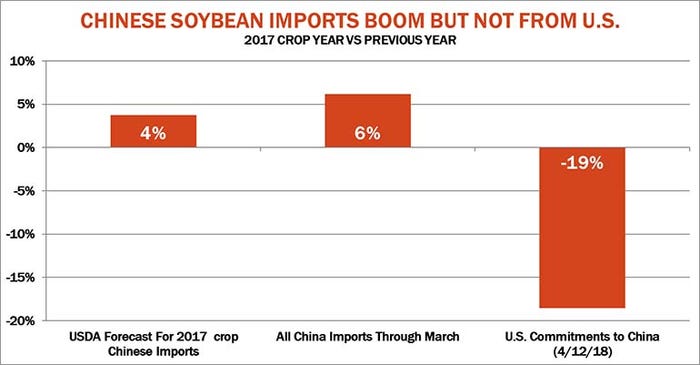
Soybean exports last week found 38.2 million bushels in old crop sales and another 40.1 million bushels in new crop sales for a total of 78.3 million bushels. That topped the average trade guess of 66.2 million bushels and pushes the weekly rate needed to reach USDA forecasts down to 4.0 million bushels.
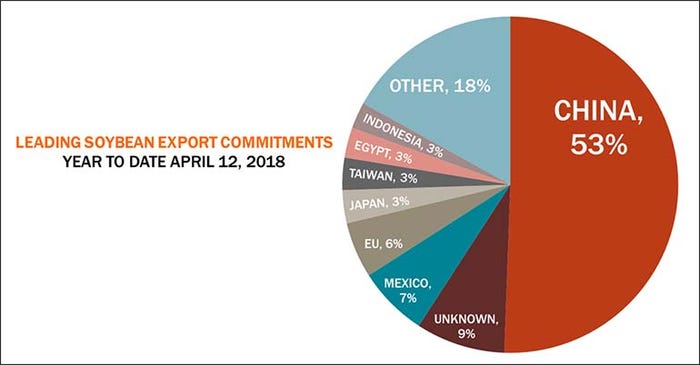
Soybean export shipments, meantime, hit a 2017/18 marketing year low, with 14.8 million bushels, thanks to Chinese volume conspicuously low – pushed out of the top five destinations for the first time in a long time. Last week’s No. 1 destination instead was Egypt, with 4.1 million bushels, followed by Mexico, Japan, Indonesia and Colombia.
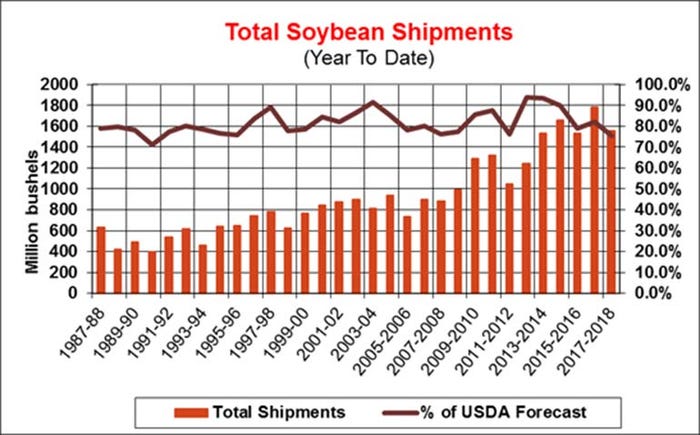
Corn exports of 43.0 million bushels of old crop sales and another 4.4 million bushels of new crop sales led to 47.4 million bushels in total sales last week. That topped trade estimates of 41.3 million bushels and landed moderately ahead of the prior week’s total of 35.3 million bushels. The weekly rate needed to meet USDA forecasts fell to 14.2 million bushels.
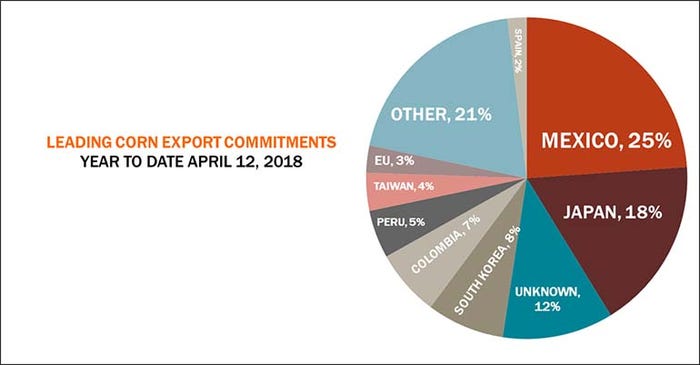
Corn export shipments of 62.8 million bushels slipped 17% from the prior week but stayed 8% above the four-week average. Mexico was last week’s top destination, with 12.1 million bushels, followed by Japan, South Korea, Colombia and Taiwan.
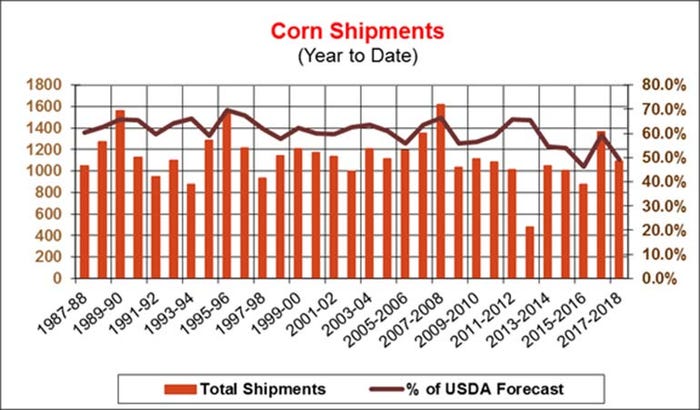
Wheat export sales saw new crop sales of 8.8 million bushels partially offset by reductions of 2.5 million in old crop sales for a net total of 6.4 million bushels. That was slightly behind the prior week’s total of 6.9 million bushels and moderately lower than the average trade guess of 11.9 million bushels. The weekly rate to reach USDA forecasts bumped up to 12.1 million bushels.

Wheat export shipments of 16.7 million bushels, however, were up 4% from the prior week and 9% higher than the four-week average. The Philippines was the No. 1 destination, with 5.3 million bushels, followed by Mexico, Japan, Iraq and Chile.
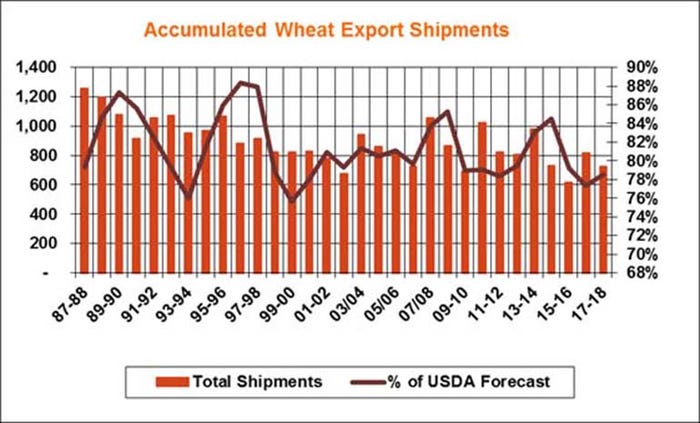
Sorghum net sales were slightly in the red last week (-52,000 bushels), as increases from China were more than offset by reductions from Japan and unknown destinations. Export shipments were down 39% from a week ago and 42% off the four-week average. Given China’s latest actions against U.S. sorghum, this problem is likely to persist if other major buyers don��’t step up.
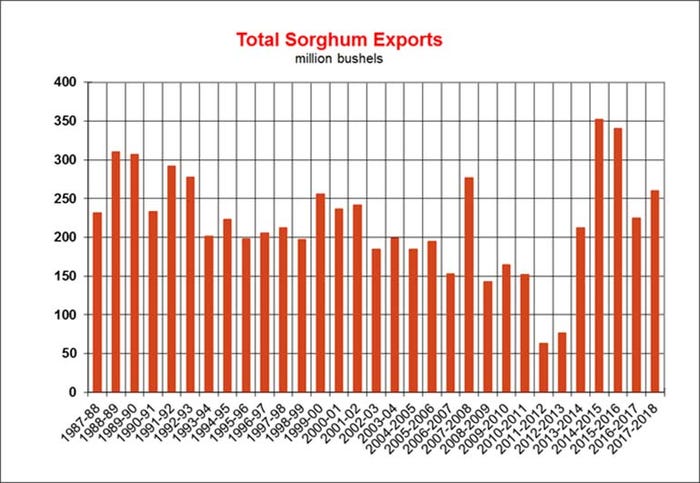
Cotton export sales of 290,200 bales bounced back 62% from the prior week but stayed 2% below the four-week average.
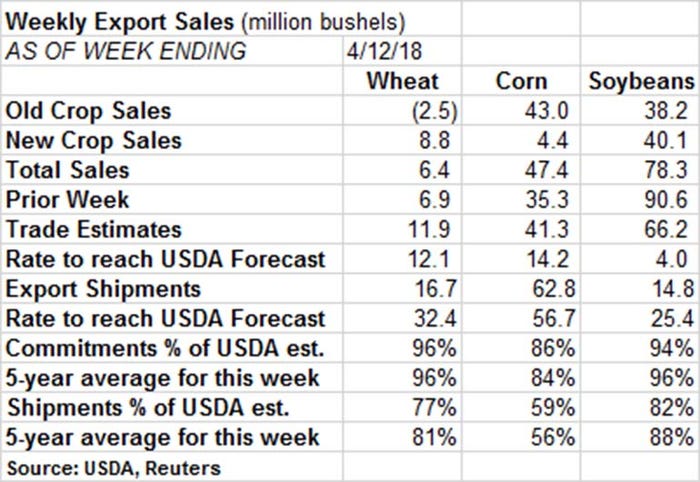
Click the download button below for charts and graphs from Bryce Knorr.
About the Author(s)
You May Also Like





